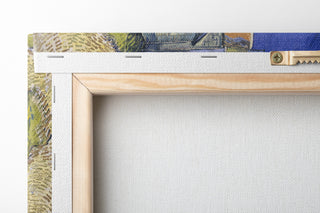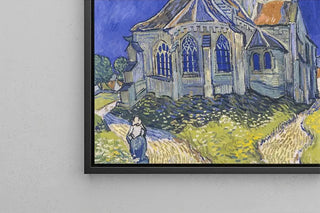A hanging on the Place de Grève and the Town Hall in 1583 - Fédor Hoffbauer


Vue de dos

Cadre (en option)
An execution on the Place de Grève and the Hôtel de Ville in 1583: a tragic and striking painting.
This iconic work depicts a poignant scene from Parisian history, where the tension between justice and the crowd crystallizes. The dark colors and accentuated shadows create a heavy atmosphere, while the architectural details of the Hôtel de Ville stand out in the background, testifying to the city's grandeur in the face of the horror of punishment. The composition, centered on the execution, immediately draws the eye, immersing the viewer in a reflection on mortality and justice. Every element of the canvas seems to tell a story, inviting a deep contemplation of this troubled era.
An execution on the Place de Grève and the Hôtel de Ville in 1583: a reflection of the brutality of the 16th century.
The artist, whose name remains anonymous, captures here a significant moment in French history, at a time when public executions were commonplace. This art print fits into a context where society was marked by political and religious tensions, notably between Catholics and Protestants. The influences of Flemish painting are evident in the realism of the characters and expressions, while the style recalls engravings of the period. This work, although tragic, is essential for understanding the customs and fears of the Parisian population at the end of the 16th century.
A decorative art print with multiple assets.
The reproduction of this work, "An execution on the Place de Grève and the Hôtel de Ville in 1583," makes a striking addition to any art collection. Whether in a living room, office, or bedroom, this art print catches the eye and sparks engaging conversations. Its reproduction quality guarantees fidelity to the original details, allowing you to feel the emotional impact of the scene. With its strong aesthetic appeal and fascinating history, this canvas becomes not only a decorative element but also a true starting point for exploring themes of justice and society through the ages.

Rendu mat

Vue de dos

Cadre (en option)
An execution on the Place de Grève and the Hôtel de Ville in 1583: a tragic and striking painting.
This iconic work depicts a poignant scene from Parisian history, where the tension between justice and the crowd crystallizes. The dark colors and accentuated shadows create a heavy atmosphere, while the architectural details of the Hôtel de Ville stand out in the background, testifying to the city's grandeur in the face of the horror of punishment. The composition, centered on the execution, immediately draws the eye, immersing the viewer in a reflection on mortality and justice. Every element of the canvas seems to tell a story, inviting a deep contemplation of this troubled era.
An execution on the Place de Grève and the Hôtel de Ville in 1583: a reflection of the brutality of the 16th century.
The artist, whose name remains anonymous, captures here a significant moment in French history, at a time when public executions were commonplace. This art print fits into a context where society was marked by political and religious tensions, notably between Catholics and Protestants. The influences of Flemish painting are evident in the realism of the characters and expressions, while the style recalls engravings of the period. This work, although tragic, is essential for understanding the customs and fears of the Parisian population at the end of the 16th century.
A decorative art print with multiple assets.
The reproduction of this work, "An execution on the Place de Grève and the Hôtel de Ville in 1583," makes a striking addition to any art collection. Whether in a living room, office, or bedroom, this art print catches the eye and sparks engaging conversations. Its reproduction quality guarantees fidelity to the original details, allowing you to feel the emotional impact of the scene. With its strong aesthetic appeal and fascinating history, this canvas becomes not only a decorative element but also a true starting point for exploring themes of justice and society through the ages.



